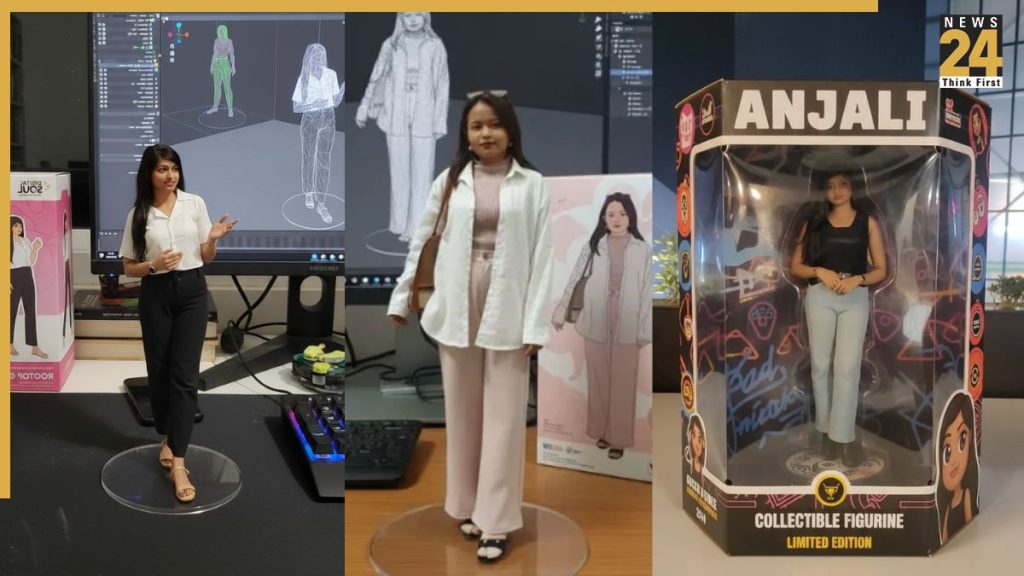Gemini AI image alternatives free: After the popularity of the ‘cool’ trend prompts, Google’s Gemini Nano Banana AI image model is now trending for its saree and Indian-inspired looks on social media. The strikingly realistic 3D figurines are capturing attention across platforms, hour after hour. This new AI model lets users create lifelike figurines that fit seamlessly into real-world settings. Designed with a highly realistic style, these figurines appear natural and detailed, impressing viewers with their authenticity. Now, anyone can transform a regular photo into a realistic AI portrait for free. If you want, you could do that in a saree. As competition increased, Gemini’s rivals started creating figurines using the same prompts. If you encounter problems with Gemini Nano Banana AI and cannot build figurines, there are other alternatives available. Here are the top free and paid AI options you can try in 2025.
Nano Banana AI vs ChatGPT, Qwen, Grok & Gemini
The competition among AI image generators is intensifying, with a major focus on the trend of turning everyday photos into 3D figurines. Google’s Nano Banana AI (Gemini 2.5 Flash) has taken over social media, creating toy-like, highly realistic images quickly. Rivals such as ChatGPT (GPT-5), Qwen Image Edit, and Grok AI are not far behind, each offering unique advantages like sharper details, better instruction handling, or even video generation. To test their true capabilities, all four were run through the same complex figurine prompt, evaluating realism, detail, speed, and accuracy. The results revealed surprising differences in their strengths and weaknesses.
Nano Banana AI leads viral 3D figurine trend
There is no doubt that Nano Banana AI has become the face of the viral 3D figurine trend. Users have been making viral trends for the feeds across Instagram, TikTok, and X, overflowing with toy-like collectables. It has become the default choice for them as it is considered to be a sharp, highly realistic, and polished image in seconds. It is designed to balance speed and photorealism, handling textures, lighting, and packaging designs so naturally that the creations are ready to share on social media immediately. Google has also added SynthID invisible watermarking, ensuring content remains both creative and trustworthy. However, a drawback seen in Nano is that it struggles with fine facial features, leaving room for competitors like ChatGPT, Qwen, and Grok to compete.
Prompt Generation
“Create a 1/8 scale realistic figurine of the characters in the image, placed on a wooden bookshelf in a home office setting. The figurine stands on a square glass base without any text. Behind it, a laptop screen shows a 3D rendering process of the same figurine. Next to the figurine is a high-end collectible-style box, featuring original artwork and flat 2D illustrations, designed to resemble premium toy packaging.”
Nano Banana AI: The key alternatives you can try
Qwen Image Edit
Qwen image edit is launched by Alibaba. It is more detail-focused, unlike Nano Banana, which emphasises smooth realism. It’s praised for its incredible attention to detail—every texture, fabric fold, shadow, and even background object looks sharp and thoughtfully crafted. About prompts, Qwen do not follow prompts literally but interprets them, which makes them stand separately as it build images with environments that look natural and immersive, often even more convincing than Nano Banana’s figurines. Facial resemblance is a little pity. The expressions can look unnatural, and the symmetry may be off.
This makes the figurines less convincing and lifelike.
ChatGPT (GPT-5)
ChatGPT GPT-5 stands out in this competition for its ability to follow complex instructions accurately. It can create figurines with precise details, including the acrylic base, desk setup, and packaging design, making it ideal for users who value accuracy. However, it has some drawbacks. It is slower than Nano Banana or Qwen, and free users can generate only two images per day, which can be limiting. Like Qwen, GPT-5 also struggles with faces, often producing slightly unnatural expressions around the eyes and mouth, which affects the overall realism of the figurines.
Grok AI
Elon Musk’s Grok AI was once a top choice for free AI image creation but now falls behind in 3D figurine realism compared to Nano Banana, Qwen, and GPT-5. Its figurines lack fine detail and polish. However, Grok excels in video generation, allowing 3D figurines to be animated into short clips with sound, making it ideal for creators who want motion and storytelling, even if it sacrifices some accuracy in static figurines.
Google Gemini
Google Gemini is a new AI system from the tech giant that combines advanced language skills with strong image and data processing. It succeeds Google’s PaLM models and competes directly with ChatGPT, handling not just text but also images, audio, and coding tasks. One of its most popular versions, the Gemini 2.5 Flash model, also called Nano Banana, has gained attention for turning ordinary photos into highly realistic 3D figurines. With its speed, photorealism, and features like SynthID watermarking, Gemini serves as both a creative tool for casual users and a powerful system for professional applications.

